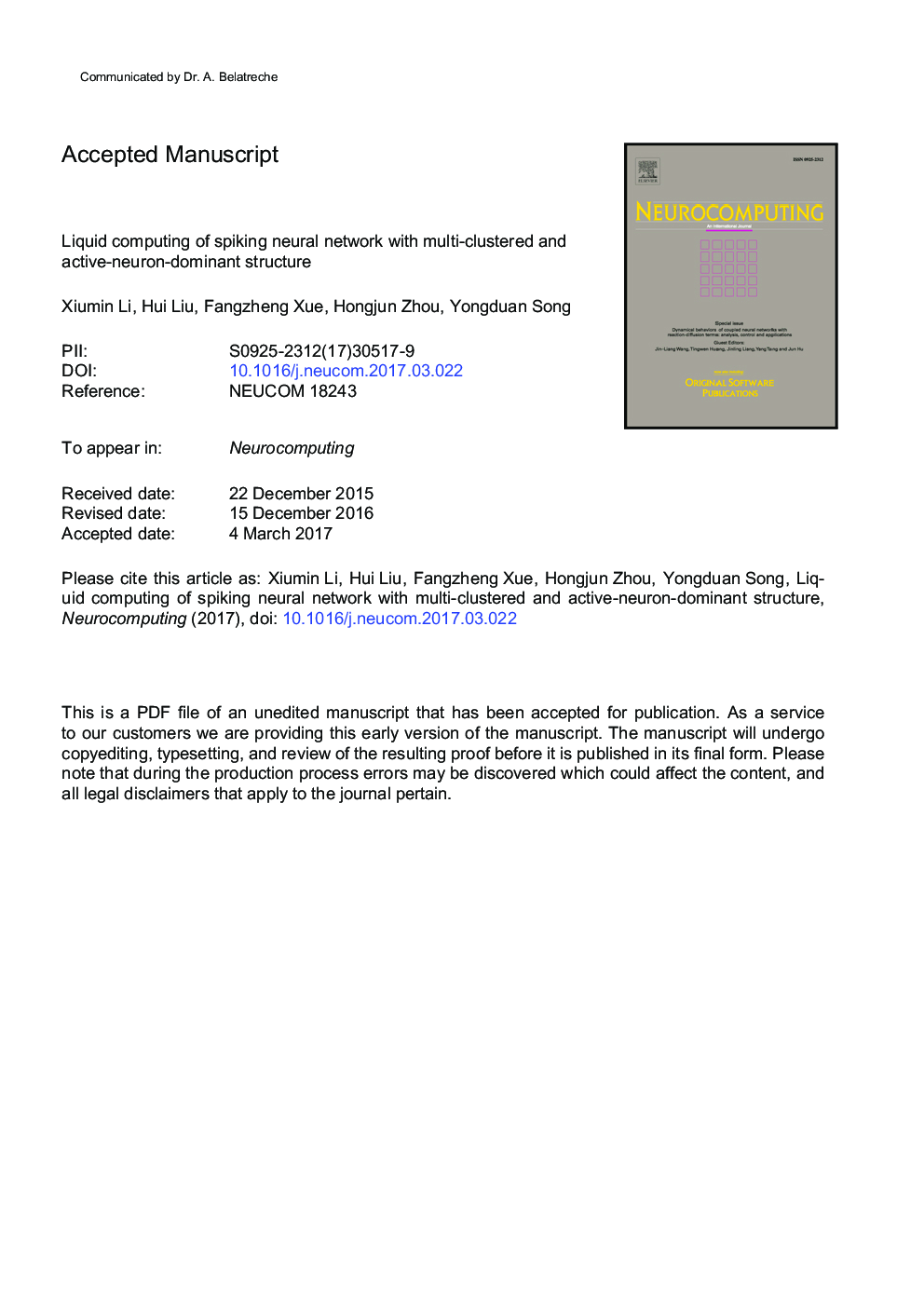| Article ID | Journal | Published Year | Pages | File Type |
|---|---|---|---|---|
| 4947507 | Neurocomputing | 2017 | 36 Pages |
Abstract
Liquid computing is an effective approach to intelligent computations of neural networks, especially for spiking neural networks. If the liquid network is embedded with a proper structure it can perform complex computational tasks. However, the modeling of self-organized neural networks with more biological characteristics is still an important open challenge, resulting in major constraints on improving the computational capability and dynamical diversity of the model. Here, we present a novel type of liquid computing model with both multi-clustered and active-neuron-dominant structure of spiking neural network, instead of the traditional random structure. The optimal parameter settings of the cluster number and time window size of clustering generation method had been considered. The synaptic weights in each cluster are further refined through the spike-timing-dependent plasticity rule to obtain an active-neuron-dominant structure. The results show that this model has much better performance on liquid computing than the random model. The enhancement of information processing capability is achieved by improving two aspects, i.e. the activity synchrony and network sensitivity, based on the clustered structure and active-neuron-dominant structure, respectively. Statistical analysis demonstrates that both structure entropy and activity entropy of our proposed network are increased, indicating its high topological complexity and dynamical diversity. Therefore, the improvement in efficiency of signal transmission of this network is confirmed.
Related Topics
Physical Sciences and Engineering
Computer Science
Artificial Intelligence
Authors
Xiumin Li, Hui Liu, Fangzheng Xue, Hongjun Zhou, Yongduan Song,
